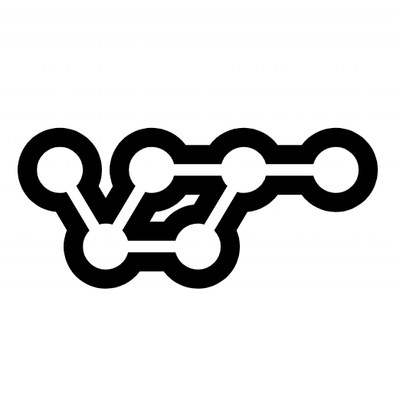
Security News
vlt Launches "reproduce": A New Tool Challenging the Limits of Package Provenance
vlt's new "reproduce" tool verifies npm packages against their source code, outperforming traditional provenance adoption in the JavaScript ecosystem.
generator-columbia-angular
Advanced tools
Opinionated Yeoman Generator for AngularJS applications with an Express Sever and a MongoDB backend

Yeoman generator that scaffolds out a full stack Javascript web app using angularjs, Grunt and Bower, Node and Express, MongoDB and Redis.
If you're not familiar with Yeoman and want to learn more If you want to build your own generator
Install Yeoman:
$ npm install -g yo
To install generator-columbia-angular from npm, run:
$ npm install -g generator-columbia-angular
Finally, initiate the generator:
$ yo columbia-angular optionalAppName
Before you actually can run the app, you need to make sure that mongodb is running. In a separate terminal run $ sudo mongod, then run $ grunt.
run $ yo columbia-angular:deploy to setup both github and heroku automatically.
Note: If your version of git is out of date, heroku may refuse to create your app for the reasons specified at https://blog.heroku.com/archives/2014/12/24/update_your_git_clients_on_windows_and_os_x and you may have to first update git. If you choose to do this with homebrew, which I recommend (for making upgrading in the future easier), you may have to set your path to use /usr/local/bin/ before using /usr/bin/ (the default). You can do this by running:
$ brew sh
and should get the following message:
Your shell has been configured to use Homebrew's build environment:
this should help you build stuff. Notably though, the system versions of
gem and pip will ignore our configuration and insist on using the
environment they were built under (mostly). Sadly, scons will also
ignore our configuration.
When done, type `exit'.
brew \[\033[1;32m\]\w\[\033[0m\]$
Then restart your terminal. If that doesn't fix your issue, refer to this homebrew issue thread for additional workarounds:
The command uses the following to setup Github:
$ hub init
$ hub add . && hub commit -m "initial commit"
$ hub create optional_org_name/repo_name -d "description of repo"
$ hub push origin master
And to setup Heroku, it runs grunt build, copies over the Procfile, initializes the dist/ dir as a separate repository, and runs:
$ heroku apps:create herokuAppName && heroku config:set NODE_ENV=production
$ git add -A && git commit -m "Initial commit"
$ git push heroku master
all of which you can of course do at the command line, provided you have both hub and the heroku toolbelt installed.
More info on working with node in Heroku
The deploy generator also uses a plugin called heroku-config to push your local .env file to heroku. Install it with:
$ heroku plugins:install git://github.com/ddollar/heroku-config.git
Deployment requires that you have a remote mongo database to connect to. You can use heroku addons to create one:
heroku addons:add mongolab
or you can [setup a mongolab account] and create one online. If you do this, just make sure to set the MONGOLAB_URI on heroku to the URI for accessing that db.
This project uses semantic versioning and github for releases. Releases can be created automatically using the grunt bump task, which will create a conventional changelog as well as a release. For more, see:
grunt-release github on creating releases grunt-conventional-changelog commit conventions node-semver
To create new releases with changelogs using the autorelease as it currently stands:
$ grunt bump:releaseType$ grunt autorelease:releaseTypeRelease type should be one of patch, minor, major, or prerelease
running grunt bump simply bumps the version, which enables conventional changelog to use the correct latest version when generating its changelog. grunt autorelease then does the following:
To then test the production version:
$ grunt build
$ grunt serve:prod
To then commit and push the production version to heroku:
$ cd dist
$ git status
$ git add --all
And normally we include a message like:
$ git commit -m "feat(v0.2.3): dist build for v0.2.3"
$ git push heroku master
Inspirations:
Go to https://www.npmjs.com/ and click on "create account". You must have an account on npm in order to publish modules
$ npm link inside the repo root
b. linking to the linked module by running $ npm link <module-name> from inside the directory you wish to use it in.$ npm unlink inside repo root and $npm unlink <module-name> inside test dir so you don't still have the local version linked in.$ npm publish.1.1.2 (2015-02-07)
<a name="1.1.1"></a>
FAQs
Opinionated Yeoman Generator for AngularJS applications with an Express Sever and a MongoDB backend
We found that generator-columbia-angular demonstrated a not healthy version release cadence and project activity because the last version was released a year ago. It has 1 open source maintainer collaborating on the project.
Did you know?

Socket for GitHub automatically highlights issues in each pull request and monitors the health of all your open source dependencies. Discover the contents of your packages and block harmful activity before you install or update your dependencies.

Security News
vlt's new "reproduce" tool verifies npm packages against their source code, outperforming traditional provenance adoption in the JavaScript ecosystem.

Research
Security News
Socket researchers uncovered a malicious PyPI package exploiting Deezer’s API to enable coordinated music piracy through API abuse and C2 server control.

Research
The Socket Research Team discovered a malicious npm package, '@ton-wallet/create', stealing cryptocurrency wallet keys from developers and users in the TON ecosystem.